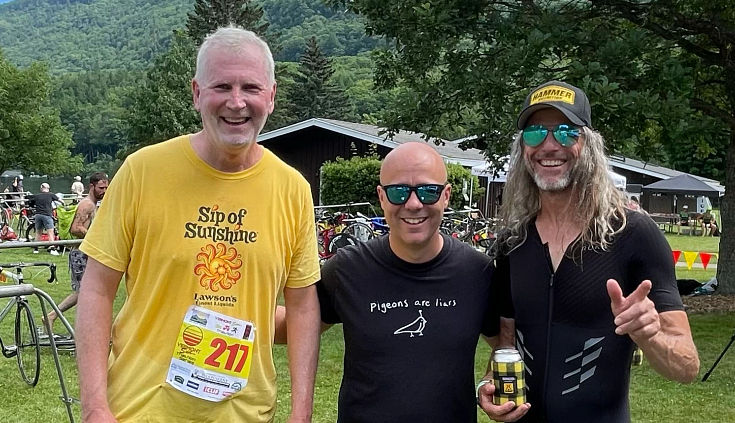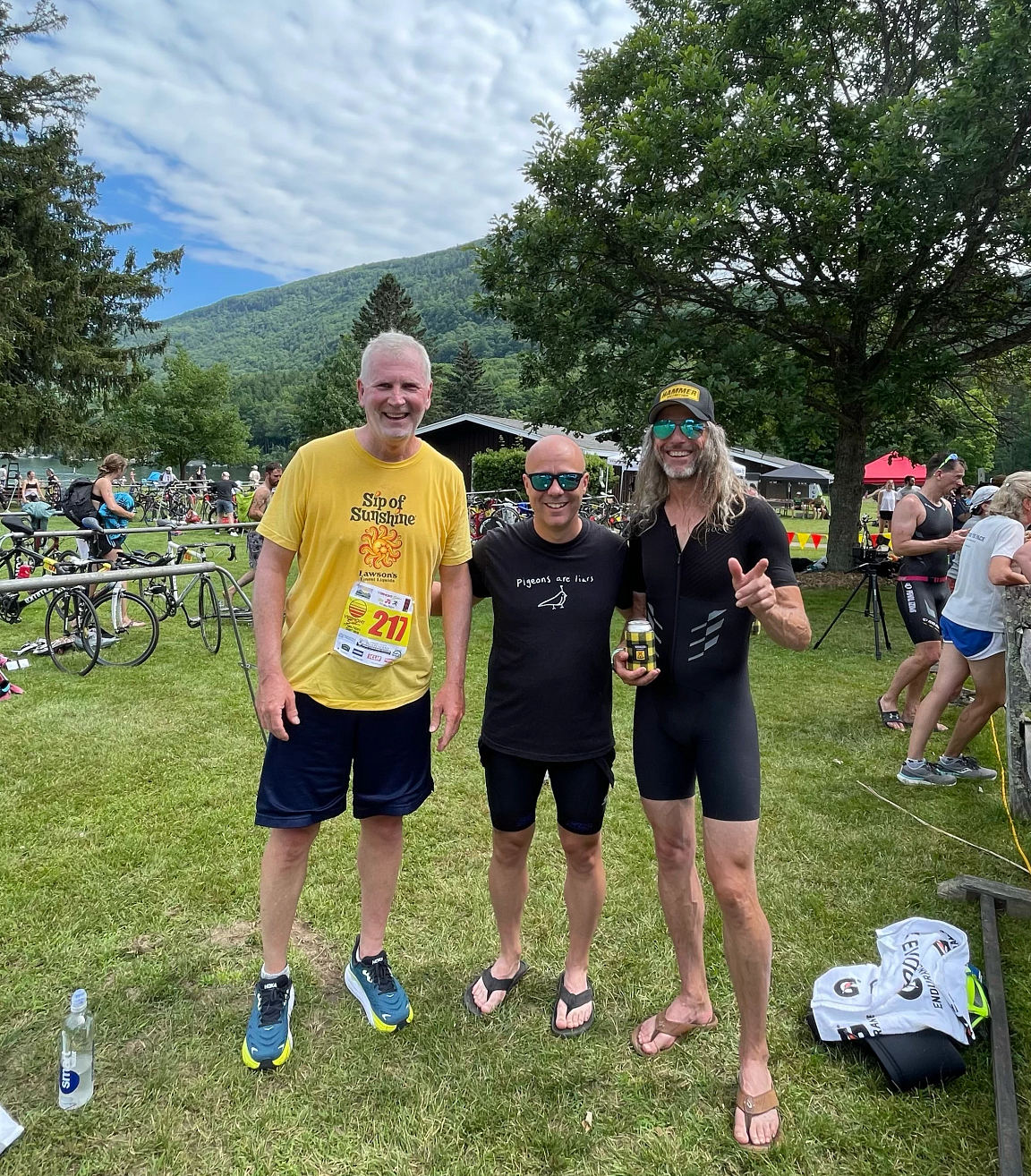AARP Hearing Center


When I turned 60 and retired to Burlington, Vermont, during the pandemic, I was inspired to try to do a triathlon: It turns out marking six decades with a triathlon is a thing in this outdoorsy little city. But to be completely honest, at that point, while I’d jogged through a few 5ks in my life, I had never been in a bike or swimming race. I was also out of shape — retirement and then COVID-19 had thrown several extra pounds on.
But I wanted to try and found out there is a version called the sprint triathlon, which means swimming 600 yards in a lake, biking 14 miles and running 3.1 miles — a 5k. The bike and run seemed doable, even if I just went slow. But the swim leg would require some real training. So all summer I swam in outdoor pools that were considered COVID-safe, and eventually was swimming 600 yards at a time, no problem.
I signed up for a sprint triathlon at the beautiful Lake Dunmore near Middlebury, Vermont. My goal, from the get-go, was just to finish, and I won’t lie: I had several moments of extreme doubt.
How to get started
1. Pick a race. Search online; there are hundreds of races every year throughout the country.
2. Follow a training plan. Find a swim-bike-run plan online for your skill level; it’ll take 8–16 weeks, depending on fitness levels.
3. Don’t forget resistance training. Weights, planks, squats and stretches are critical.
4. Incorporate rest. Taking 1–2 days off each week is key for recovery.
For instance, a friend told me that until you experience the transition from a 14-mile bike ride to the 3.1-mile run, you aren’t ready. So we did a trial bike ride around Lake Dunmore, to be followed by a run. But at the end of the bike ride, my legs were toast. No way I could run. I learned that pacing is critical I needed to bike more moderately if I was going to be able to transition to the run. (I also learned that it’s best to avoid getting a COVID vaccine the day before a workout!)
I also began having serious calf muscle pulls and foot arch pain while training. I was on the verge of quitting when a bit of luck came my way. One day after I had some work done on my bike at a local outdoors store, they asked if I needed anything else. I jokingly said I needed new feet for an upcoming triathlon. They brought me to their footwear department, introduced me to a brand of famously comfy running shoes — and voilà! My arch and calf problems simply went away.



































































You Might Also Like
7 Great Hikes for Older Americans
Explore spectacular landscapes on these not-so-strenuous outdoor excursions
Classic Rock Destinations Worth a Visit
Crank up these tunes during your annual summer road trip
25 Surprising Ways to Live Longer
Science-backed ways to extend life expectancy